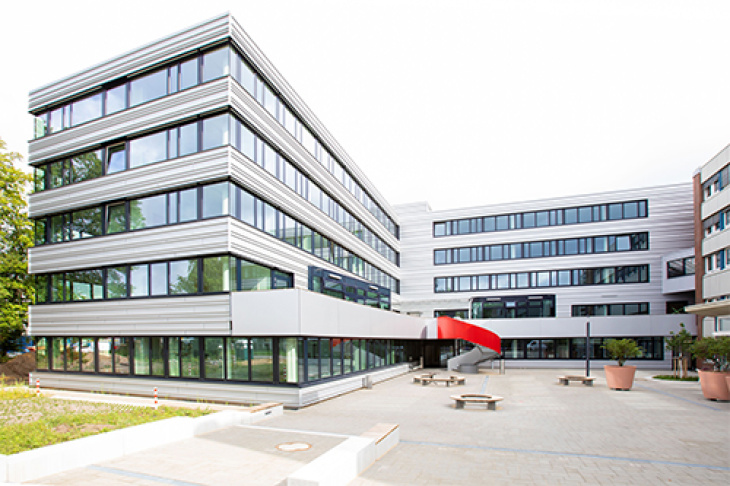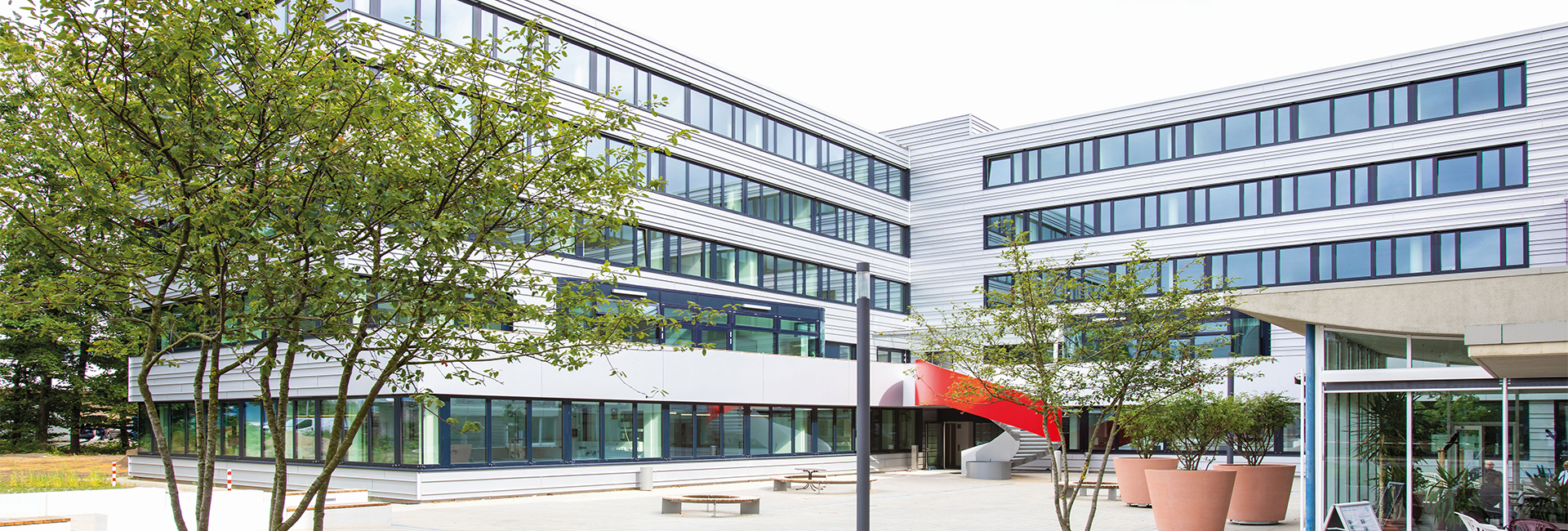New center for X-ray and nano research
No less than three research ministers today opened the Center for X-ray and Nanoresearch CXNS at DESY in Hamburg. The German Federal Research Minister Bettina Stark-Watzinger, Hamburg's Science Senator Katharina Fegebank and Schleswig-Holstein's Research Minister Karin Prien handed over the key for the new transnational research building to the new users: the Helmholtz-Zentrum Hereon, the Christian-Albrechts-Universität zu Kiel and DESY.

Building with a future: The CXNS stands for modern X-ray and nano research. Photo: DESY/ Marta Mayer
The CXNS is a multi-institutional, interdisciplinary platform for research with X-ray light in combination with nano- and material sciences. The center benefits, among other things, from its proximity to the high-brilliance X-ray source PETRA III. The approximately 18 million Euros for the building come from funds provided by the federal government, the participating states of Hamburg and Schleswig-Holstein, and the basic budgets of the three participating research institutions.
The five-story building has a floor area of over 5,000 square meters, more than 700 square meters of laboratory space, and room for around 250 employees. In addition to the German Engineering Materials Science Centre of the Helmholtz-Zentrum Hereon, the CXNS also houses the DESY NanoLab, parts of the Ruprecht-Haensel Laboratory of the Christian Albrechts University zu Kiel, a cooperation between DESY and the Technical University of Hamburg, and a branch of the Leibniz Institute for Crystal Growth. In addition, working groups of DESY Photon Science use laboratories and office space.
New perspectives also for Hereon
"At the Hereon, we develop technologies to shape the necessary change towards more sustainability. Lightweight construction and medical technology, hydrogen technologies or membranes for drinking water treatment are among our research fields. With the globally unique characterization methods at CXNS, we are able to understand processes and materials down to the atomic level and thus build the bridge from basic research to the digital twin to innovation," explained Prof Matthias Rehahn, Scientific Director at Hereon.
The German Federal Research Minister Bettina Stark-Watzinger explained, "Basic research investigates the fundamental questions of our world and in the process always discovers something new. It creates knowledge that flows into our innovation pipeline, which we so urgently need to face major challenges such as pandemics or climate change. With the CXNS, a research center has been created that is second to none. We are strengthening the location and creating the foundations for an effective and internationally leading regional innovation ecosystem. The proximity to DESY's start-up landscape will also ensure that ideas from research can be brought into application more quickly."
Further Information
Contact
Communication and Media
Helmholtz-Zentrum Hereon
